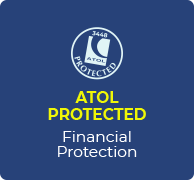The Swedish capital of Stockholm is not only Scandinavia's largest city but also one of its most enchanting, with its centuries-old alleyways and squares spread across an archipelago of 14 islands. Locals are extremely proud of the fact that in Stockholm one can go ocean-fishing in the heart of the city.
This historic metropolis with a small town heart boasts a multitude of museums, restaurants, parks, fun fairs, a never-ending nightlife (licensing hours extend into the early hours), and a rich cultural tradition. There's never a dull moment, particularly in the summer when the sun virtually never sets because of the city's position in the far northern latitudes.
Most tourists are initially drawn to the quaint Gamla Stan (Old Town), a warren of narrow cobblestone streets overshadowed by historic houses. It radiates out from the sumptuous Royal Castle, where Swedish monarchs have resided since the 13th century.
However, despite the rich medieval heritage, Stockholm is not an old-fashioned enclave. Citizens have developed a reputation for being trendy, daring and innovative, especially in the global realms of IT and fashion, often setting the pace in the technology and design fields.
Stockholmers are also immensely concerned with the environment, and the cityscape is made up of one-third water, one-third green space, one-third buildings, and some of the cleanest air of any city in the world. Pack a picnic, hop aboard a ferry, and make for one of the parks where you will undoubtedly be treated to a free concert; or head for the legendary shopping districts of Biblioteksgatan (exclusive European boutiques), Odengatan (antique treasures), and others.
There is culture to be soaked up too, with more than 150 museums to visit, art festivals galore, opera and jazz concerts, and architecture to be admired, including the beautiful City Hall where the Nobel Prize banquet takes place. It may be old but Stockholm is a destination for the young and energetic, and not overrun with tourists like many other European capitals.
Stockholm Travel Guide
Stockholm is a delightful melange of medieval charm and cutting-edge modernity. The Swedish capital's beautiful buildings and suburbs occupy 14 main islands and appear to exist harmoniously with the natural environment: the city is said to be one third water, one third green space, and one third buildings, and is known to have remarkably clean air. All of these factors conspire to make Stockholm a breathtaking feast for the eyes, with colourful buidlings reflecting off the water and golden sunlight filtering through the trees.
Endless summer days, a cosmopolitan nightlife, miles of pretty waterways, gourmet restaurants, interesting museums, superior shopping, numerous parks, and an historic medieval enclave all contribute to making a holiday in Stockholm a memorable experience. It is a trendy city that has a lot to offer fashionistas and gourmets as well as those looking to do some quality traditional sightseeing. Stockholm also benefits from the fact that it is not yet overrun by tourists, despite its myriad charms.
Best time to visit Stockholm
A city for all seasons, a holiday in Stockholm can be enjoyed at any time of year, but the best months to visit are June, July and August. Sun-lovers are advised to travel to Stockholm during summer, the most popular season for tourism, when daylight extends well into the night and the pavement cafes remain bathed in sunshine for almost 24 hours. In winter the chill and darkness sets in, but travellers can always retreat to the cosy pubs, gourmet restaurants, or fascinating museums.
What to see in Stockholm
-Discover Sweden's fascinating history and Viking heritage at the Museum of National Antiquities.
-Visit the Stockholm City Hall and marvel at its elaborate interior.
-Stroll through five centuries of history at the outdoor Skansen Museum.
-Marvel at the salvaged Royal Warship Vasa, which sank in 1628.
What to do in Stockholm
-Treat the kids to a day of amusement park fun at Grona Lund.
-Explore Royal Djurgarden, an island chock full of tourist attractions.
-Cruise around the many islets of the Stockholm Archipelago.
-Take a tour of the Royal Palace, one of the largest palaces in Europe.
Beyond Stockholm
Apart from the many delights of the islands that form the Stockholm Archipelago, the historic attractions of Uppsala are within very easy reach for excursions out of the city, and the beautiful Gotland, Sweden's largest island, is a short flight away. A short drive will bring tourists in Stockholm to the old Sala Silver Mine, which offers thrilling underground tours.
Getting there
Generally known as Arlanda Airport, the Stockholm Arlanda Airport is the main international flight hub in Sweden. The airport is situated 28 miles (45km) north of Stockholm. There are direct flights to Stockholm from cities in the UK and the US, and most European capitals.
Did you know?
-Stockholm's nickname is 'Venice of the North', owing to its striking beauty and watery surroundings.
-Stockholm's subway is considered the world's longest art gallery, with sculptures, mosaics and paintings in most stations.
-One of the oldest surviving buildings in Stockholm is the Riddarholm Church, built in 1270.
Getting Around
Stockholm is easy to navigate, with an excellent public transport system made up of buses, metro lines, trams, and ferries. The metro is generally the most convenient way of getting around the city. Tickets are valid for all types of transport and can be purchased from stations and newsagent kiosks, and online. One and three-day passes are good deals for those planning to travel a lot. Driving in Stockholm is easy compared to most large cities, though drivers need to be aware of toll passages and an overall scarcity of parking. Walking or cycling are often the best options for sightseeing in the city centre; Uber and Lyft are also available.
Nightlife
Stockholm has a vibrant nightlife with a multitude of bars, clubs, and jazz venues to enjoy. Admission and drinks prices are quite high in Stockholm but the opening hours are long (many nightclubs stay open until 3am or 4am, and big clubs stay open as late as 5am), ensuring a good night out. Stockholm has a busy theatre calendar that runs from mid-August to mid-June, with a few special summer performances in between.
The most popular nightlife venues in Stockholm are in Stureplan and surrounds, while many of the most popular indoor and outdoor events are held in Djurgarden. Adventurous (and warmly dressed) visitors will want to have a drink at Stockholm's permanent Ice Bar, located near the Central Station.
There is also a thriving gay nightlife in Stockholm, with many nightclubs and bars concentrated on the island of Sodermalm. Stockholm Pride attracts tens of thousands of people to Stockholm in August every year for the massive party and parade centred on Pride Park.
There is a busy jazz scene in Stockholm, and there is plenty of live music of all types to enjoy, with a number of popular festivals. There is something happening seven days a week, so visitors should make sure to check out online listings to plan their trip.
Shopping
Shopping in Stockholm can be an expensive affair, with treasured souvenirs including Swedish glass products, wooden furniture in blond pine or birch, and of course wooden and ceramic Swedish clogs. Most shops in Stockholm are open 10am to 6pm from Monday to Friday, and from 10am till lunch on Saturday.
There are a number of shopping areas in Stockholm, some of the trendiest being Gamla Stan, Sergels Torg, Kungsgatan, and SoFo (South of Folkungagatan). Other good shopping districts in Stockholm include Drottninggatan, Harrngatan, Hotorget and Stureplan.
Vasterlanggatan Street in Gamla Stan has good antique shops, while Kungsgatan is home to the Drottninggatan pedestrian mall. The renowned Gallerian shopping centre in Sergels Torg has a variety of high-street and brand-name outlets to browse through, and nearby department stores include NK and Ahlens. The PUB department store is located in Hotorget.
However, much of Sweden's pop-cultural influence is designed and sold on Sodermalm Island, in a little area known as SoFo. SoFo is home to some of the most impressive boutique and concept stores to be found anywhere in the world, where shoppers can delight in minimalist, edgy Swedish fashion, or find organic, local cosmetics. But visitors shouldn't be fooled by some of the high prices, as SoFo is for the youth and is home to plenty of well-priced vintage stores where some interesting classics can be had on the cheap.
Restaurants
Stockholm is a delight for foodies, as superb traditional Swedish fare is on offer along with trendy international restaurants. Stockholm's Old Town, Gamla Stan, is a great place to start for visitors intent on eating their way around the city.
However, it is a good idea to explore the little side streets for gastro pubs frequented by locals, as these are both more authentic and less expensive than the touristy eateries on the main drag. Most of Stockholm's main islands have a restaurant scene to investigate. For restaurants with character, the Sodermalm district is a wonderful option. It's a trendy, young neighbourhood with a selection of artistic eateries.
Unsurprisingly for a city comprised of islands, Stockholm is known for its exceptional seafood. Classic Swedish cuisine commonly includes seafood such as herring, salmon, and shellfish, but for lovers of red meat, the Swedish meatballs and venison are also renowned. Desserts often incorporate blueberries and cloudberries, which are great favourites with the locals.
Although eating out in Stockholm is notoriously expensive, those on a budget can save money by filling up on the generous lunch specials offered by many restaurants, especially in Gamla Stan. Of course, there are plenty of fast food options as well, but travellers should opt instead for the reasonably priced markets dotted around the city, where fresh and organic produce can be tasted in both local and international flavours.
Sightseeings
The city of Stockholm has a vast selection of attractions to offer visitors. During summer there are extensive hours of daylight for sightseeing outdoors, and on winter days there are plenty of museums and galleries to visit.
Popular sightseeing attractions in Stockholm include the Royal Palace and the distinctive City Hall (Stadshuset), both of which can only be visited on a guided tour, and are well worth exploring. Skansen open-air museum is an original concept with some great historical value, and the Vasa Museum, housing the 17th-century battleship of the same name, is a favourite with visitors.
Both museums can be found on Djurgarden, an island which is a hub of activity for travellers, with numerous museums, galleries, and other attractions to explore. These include the endlessly popular Grona Lund, the oldest amusement park in Sweden.
If the weather turns, the Museum of National Antiquities is another interesting Stockholm attraction, where the ancient finds can enthral visitors for hours. However, if the outdoors call, an excursion to any of the 24,000 archipelago islets will not be forgotten.
The Go City pass (formerly the Stockholm Card) is a great investment for tourists planning to do plenty of sightseeing, allowing free admission to more than 80 museums and attractions, free travel on public transport, and much more. The card can be purchased online or bought from numerous outlets in Stockholm. However, without the card certain museums, such as the Nobel Museum, are free to the public on certain days of the week.
Child Attractions
Stockholm is an extremely child-friendly city, with many activities and attractions for children of all ages. Amusement parks like Gröna Lund and Junibacken are a great treat for children in Stockholm after a day or two of museums and galleries.
A rainy afternoon can happily be spent at the child-friendly Babybio movie theatre. A bit further out, the open-air museum, Skansen, has a children's area featuring a petting zoo and miniature train.
There are a number of parks and open spaces in Stockholm where children can run around and expend some energy. Gärdet is a large open space ideal for playing games, while several stables near the city offer horse and pony rides.
Climate
In the coldest winter months, between December and February, average temperatures range from about 14F (−10C) to 30F (−1C), although temperatures do sometimes drop to below −4F (−20C). Average temperatures in summer, between June and August, range between 55F (13C) and 77°F (25C), but temperatures can reach 86°F (30C). Snowfall usually occurs from January to March. Rainfall can occur throughout the year, though the summer months of July and August tend to be the wettest. Stockholm receives about 18 hours of daylight in midsummer, and only six hours in midwinter.











